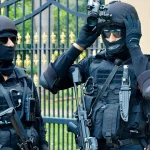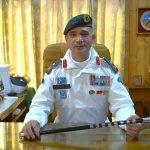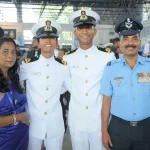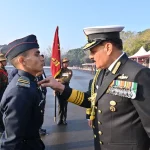The Selection Board Service (SSB) Interview is a rigorous and multi-faceted assessment process designed for aspiring candidates seeking entry into the Indian Armed Forces. Among the various evaluations in the SSB framework, the Word Association Test (WAT) holds particular significance. This psychological assessment, executed on the second day of the SSB, plays a crucial role in revealing a candidate’s subconscious mindset and emotional intelligence.
In this article, we will delve into the intricacies of the Word Association Test, its objectives, methodology, evaluation criteria, and its relevance to the SSB interview process. We will explore why this psychological tool is essential not only for recruitment but also for ensuring that future officers possess the requisite qualities crucial for leadership in the Armed Forces.
Historical Context
To understand the WAT in the context of the SSB Interview, it is essential to trace its historical roots. The psychological evaluation of candidates is not a novel concept; it has been utilized in various forms across the world, particularly in military and corporate settings. The origins of the word association method can be linked to early psychological experiments that sought to uncover the connections between human thoughts and emotions.
The SSB itself was established post-independence, with a structured process for interviewing candidates. This framework was imported from various psychological assessment methodologies used by advanced military cultures globally, adapted to the unique requirements of the Indian Armed Forces. Over time, the WAT evolved, becoming an integral part of the selection process aimed at identifying potential leaders based on their innate psychological responses to words that resonate with their experiences and values.
The Word Association Test: An Overview
Objectives of the WAT
The Word Association Test is designed to assess various psychological parameters of a candidate. The primary objectives include:
- Subconscious Mind Evaluation: WAT taps into the subconscious reactions of candidates, providing insights into their genuine thoughts and feelings.
- Cognitive Agility: The test measures quick thinking and the ability to articulate thoughts under time constraints.
- Emotional Intelligence and Personality Traits: Candidates’ responses reflect critical personality traits such as leadership, positivity, adaptability, and integrity.
- Assessment of Officer-Like Qualities (OLQs): The WAT helps evaluate qualities essential for an officer in the Armed Forces, such as responsibility, decision-making capability, and ethical standing.
Process of the WAT
During the test, candidates face a straightforward but intense challenge: they are presented with 60 words, each displayed on a screen for 15 seconds. They must write the first meaningful sentence or thought that comes to mind in response to each word. This process is sequenced without pauses, compelling candidates to think on their feet.
- Time Constraint: The strict 15-second time limit encourages spontaneous, unfiltered reactions, as candidates cannot overthink or rehearse their responses. This immediacy is crucial for delivering genuine insights into the candidate’s thought process.
Types of Words Used
The list of words employed in the WAT is diverse, catering to a range of emotional responses. These words can be classified into three categories:
- Positive Words: Terms that evoke affirmative feelings and thoughts, such as “Courage” and “Help.”
- Neutral Words: Words that lack strong emotional connotations, serving as a middle ground.
- Negative Words: Words that may elicit adverse reactions, such as “Cheat” and “Fear.”
Each category challenges candidates to articulate their thoughts and reactions to various stimuli, allowing evaluators to gauge their mindset and emotional resilience.
Evaluation Criteria
Evaluators meticulously analyze candidates’ responses during the WAT process. The analysis includes:
- Thought Process: Understanding the logical structure and depth of the responses.
- Mental State: Assessing the composure and clarity of thought under pressure.
- Values and Beliefs: Insights into personal values reflected through the candidate’s answers.
- Emotional Resilience: How candidates handle negatively charged words indicates their stress management capabilities and emotional strength.
- Officer Like Qualities (OLQs): Evaluators are particularly focused on aspects such as integrity, responsibility, commitment, confidence, and leadership potential.
Guidelines for Responses
Candidates preparing for the WAT should adhere to specific guidelines to improve their chances of performing well:
- Originality: Responses should be original and genuine, reflecting personal thought rather than memorized phrases or idioms.
- Positivity: Candidates should aim to maintain an optimistic tone in their responses, especially when handling negative words.
- Clarity and Factuality: Sentences should be concise, clear, and based on sound reasoning, avoiding overly complex structures.
Sample Words and Responses
To illustrate the WAT format, here are examples of typical words and sample responses:
| Word | Sample Response |
|---|---|
| Courage | Courage transforms challenges into opportunities. |
| Honesty | Honesty builds trust and strong relationships. |
| Leader | A leader inspires and guides the team. |
| Patriotism | Patriotism means selfless service to the nation. |
These examples reflect a disciplined thought process and a candidate’s ability to convey meaningful ideas succinctly.
Real-World Applications and Insights
Candidate Experiences
Many candidates who have undergone the SSB interview process emphasize the importance of the WAT in displaying their authentic selves. For instance, a candidate who had initially struggled with anxiety found that the WAT, despite its pressures, offered a platform to express their true self, uncovering strengths they had not previously recognized.
Another candidate noted that the diversity of words challenged their perspectives, prompting them to think critically about their values and how they would communicate those values as a future officer in the Armed Forces.
Expert Insights
Experts in military psychology often highlight that the WAT acts as a microcosm of daily decision-making scenarios that officers face. Dr. Ramesh Sharma, a prominent psychologist specializing in defense assessments, suggests that “the ability to think on your feet, especially under pressure, can be the difference between effective leadership and failure to respond in critical situations.”
Comparative Analysis
While the WAT is unique to the SSB process, other psychological assessments employed in similar contexts can provide further insights. For instance, tests measuring personality traits like the Myers-Briggs Type Indicator (MBTI) offer structured insights into an individual’s character. However, unlike the WAT, which relies on immediate, instinctual responses, these instruments often involve longer reflection periods and structured questions that may not reveal subconscious thoughts as effectively.
Challenges and Solutions
Challenges faced by Candidates
One major challenge candidates face during the WAT is managing anxiety and pressure. The high-stakes environment, combined with the stringent time limits, can lead to performance anxiety, which may inhibit their ability to think clearly and articulate effective responses.
Proposed Solutions
- Practice Sessions: Engaging in timed practice sessions can help candidates become accustomed to the time pressure of the WAT, enhancing their comfort level during the actual test.
- Mindfulness Techniques: Incorporating mindfulness and stress management techniques can assist candidates in maintaining composure, allowing them to focus better on their responses.
- Feedback Mechanisms: Seeking feedback from previous candidates or professionals can provide insights into improving performance and addressing common pitfalls that candidates may encounter during the WAT.
Future Trends and Predictions
As military recruitment processes evolve, there is potential for integrating advanced technology into psychological assessments like the WAT. Innovations such as AI-driven analysis could provide deeper insights into response patterns, while virtual reality (VR) environments might simulate the high-pressure scenarios that candidates would face during the test. These advancements could further refine the evaluation process, ensuring that only the most suitable candidates are selected for the Armed Forces.
Conclusion
The Word Association Test is more than just a series of words; it’s a profound psychological tool that offers invaluable insights into a candidate’s mindset, personality, and suitability for leadership roles within the Indian Armed Forces. As candidates navigate this test, understanding its objectives, processes, and evaluation criteria can significantly enhance their performance.
For aspiring officers, mastering the WAT is a vital step towards demonstrating the qualities essential for success in the Defence sector. By embracing authenticity, cultivating positivity, and maintaining clarity in their thought processes, candidates can maximize their chances of success.
As you prepare for your SSB Interview, remember that the WAT is your opportunity to shine by showcasing your genuine self—an essential trait of effective leadership in the Armed Forces. For further resources, support, and guidance, explore materials and courses offered by SSBCrack and SSBCrackExams, where you can find comprehensive tools to enhance your preparation.












